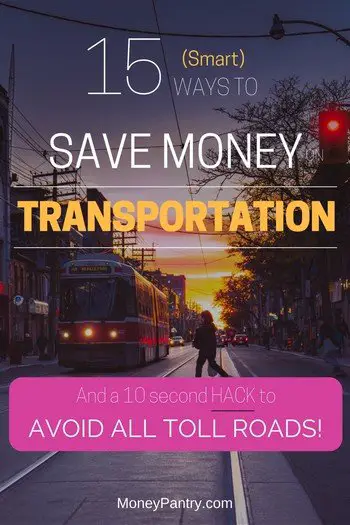Looking for ways to save money on your daily commute? Well, look no further! In this article, we will discuss effective strategies for saving money on public transport. Whether you rely on buses, trains, or subways, these tips will help you minimize your expenses and keep more cash in your pocket. From smart ticket planning to taking advantage of discounts, let’s explore how you can make the most out of your public transportation experience without breaking the bank! So, are you ready to hop aboard the train of savings? Let’s dive right in!
Strategies for Saving Money on Public Transport
Public transportation is a convenient and cost-effective way to get around in many cities. However, the expenses can add up, especially for frequent travelers. Fortunately, there are several strategies and tips you can implement to save money on public transport. In this article, we will explore various methods to help you reduce your transportation costs while still enjoying the convenience of public transit.
1. Choose the Right Ticket or Pass
One of the first steps to saving money on public transport is to choose the most suitable ticket or pass for your travel needs. Here are some options to consider:
a) Single Tickets
If you only use public transport occasionally, purchasing single tickets for each trip may be the most economical choice. Single tickets are typically available for a one-way journey and can be bought from ticket machines, ticket offices, or mobile apps. However, keep in mind that buying single tickets for every trip can quickly add up, especially if you use public transport frequently.
b) Day Passes
If you plan to travel extensively within a day, a day pass could be a cost-effective option. Day passes typically provide unlimited travel for a specific period, like 24 hours, within a particular zone or network. Before purchasing a day pass, consider the number of journeys you anticipate making and compare the cost of individual tickets to determine if it will save you money.
c) Weekly or Monthly Passes
For frequent commuters, weekly or monthly passes can offer substantial savings. Many public transport networks provide discounted passes that allow unlimited travel within a specific time frame. These passes often offer greater convenience and flexibility compared to single tickets or day passes.
2. Take Advantage of Off-Peak Fares
Public transport fares are often structured to encourage travel during off-peak hours. By adjusting your travel schedule, you can take advantage of reduced fares. Off-peak hours vary between cities, but they generally include mid-morning, mid-afternoon, and late evenings. By avoiding rush hours, not only can you save money, but you can also experience a less crowded and more comfortable journey.
3. Consider Bulk Purchase or Discounted Packages
In many cities, public transport operators offer bulk purchase options or discounted packages. These offers can provide significant savings, especially for long-term usage. Some examples include:
a) Multi-Trip Tickets
Multi-trip tickets are designed for regular commuters who use public transport frequently. These tickets allow you to purchase a bundle of rides at a discounted price, which can be used over an extended period. Consider checking with your local transport authority for any available multi-trip options.
b) Student or Senior Discounts
If you are a student or a senior citizen, you may be eligible for discounted fares. Many cities provide concessionary rates for students and seniors, which can help reduce your transportation costs. Make sure to carry the required identification to avail of these discounts.
c) Employer Travel Schemes
Some employers offer travel schemes that provide subsidized or discounted public transport passes to their employees. Check with your employer or human resources department to see if such schemes are available. These schemes can significantly reduce your transportation expenses.
4. Optimize Your Route
Planning your journey efficiently can save both time and money. Consider the following tips to optimize your route:
a) Direct Routes
Choose public transport routes that take you directly to your destination. Avoid routes with numerous transfers, as each transfer often incurs an additional fare. Direct routes can help you save money and reduce travel time.
b) Off-Peak Routes
Some routes may have different fares depending on the time of day. Research and identify routes that offer lower fares during off-peak hours. By selecting these routes, you can save money while reaching your destination.
c) Alternate Modes of Transport
Public transport networks often include various modes of transport, such as buses, trains, trams, and ferries. Consider using alternate modes of transportation when suitable. For shorter distances, walking or cycling may even be a more economical and healthier option.
5. Utilize Travel Cards or Mobile Apps
Travel cards and mobile apps can simplify your public transport experience while potentially offering additional cost savings. Here’s how:
a) Travel Cards
Many cities provide reloadable travel cards that offer reduced fares compared to single tickets. These cards are often more convenient and save time since you can simply tap the card on the reader before boarding. Check if your city offers such travel cards and take advantage of the discounted rates they provide.
b) Mobile Apps
Mobile apps provided by public transport operators often offer various benefits, including ticket purchases, route planning, and real-time updates. Some apps may even provide exclusive discounts or promotional offers. Download the relevant apps for your city and utilize the features to save money and enhance your public transport experience.
6. Seek Out Additional Discounts and Offers
In addition to the strategies mentioned above, there may be other ways to obtain discounts or special offers for public transport. Here are a few avenues to explore:
a) Tourism Passes
If you are a tourist visiting a city, consider purchasing a tourist pass. These passes typically provide unlimited travel on public transport and offer discounts on attractions and tours. Evaluate the cost and benefits of these passes to determine if they align with your travel plans.
b) Loyalty Programs
Some public transport operators may have loyalty programs that reward frequent travelers with discounts or free rides. Check if your city’s transport authority offers any loyalty program and take advantage of the benefits they provide.
c) Community or Non-Profit Programs
Certain communities or non-profit organizations may offer transportation assistance programs aimed at reducing the financial burden of public transport. Research if there are any local programs available in your area that can help you save money on public transport.
In conclusion, by implementing these strategies and tips, you can effectively reduce your expenses while using public transport. From choosing the right ticket or pass to optimizing your route and taking advantage of off-peak fares, there are numerous ways to save money. Remember to stay informed about any special offers, discounts, or loyalty programs that may further enhance your savings. By being mindful of your travel choices and exploring cost-effective options, you can enjoy the convenience of public transport without straining your budget.
65 Tips to Save Money on Travel [Travel Hacks!]
Frequently Asked Questions
Frequently Asked Questions (FAQs)
1. How can I save money on public transport?
By planning your trips in advance, using discounted travel cards or passes, and considering alternative transportation options such as walking or cycling for short distances, you can save money on public transport.
2. Are there any apps or websites that can help me find the cheapest public transport options?
Yes, several apps and websites provide real-time information about public transport routes, schedules, and prices. Some popular ones include Google Maps, Moovit, and Citymapper.
3. Can carpooling be a cost-effective alternative to regular public transport?
Absolutely! Carpooling allows you to split transportation costs with others, reducing the overall expense of commuting. You can use platforms like BlaBlaCar or connect with colleagues or neighbors to arrange carpooling arrangements.
4. Are there any specific times during the day when public transport fares are cheaper?
Many public transport systems offer discounted fares during off-peak hours, which are typically outside of rush hour periods. Check with your local transport authority to find out the specific timings for discounted fares.
5. How can I take advantage of loyalty programs or frequent traveler benefits to save on public transport?
Some public transport networks and ticket providers offer loyalty programs or frequent traveler benefits that provide discounts, free rides, or additional perks. Joining these programs and using them regularly can help you save money.
6. Is it worth investing in a monthly or annual public transport pass?
If you frequently use public transport, purchasing a monthly or annual pass can save you a significant amount of money in the long run. Calculate your average monthly expenses on public transport and compare it with the cost of a pass to determine if it’s a worthwhile investment.
7. Are there any special discounts available for students, seniors, or people with disabilities?
Yes, many public transport systems offer discounted fares for students, seniors, and individuals with disabilities. You may need to provide valid identification or documentation to avail of these discounts.
8. Can I reduce my public transport expenses by combining multiple modes of transportation?
Yes, using a combination of public transport modes, such as buses, trains, and trams, can often be more cost-effective than relying on a single mode. Research different routes and fares to find the most efficient and budget-friendly options.
Final Thoughts
To save money on public transport, there are several effective strategies that can be implemented. Firstly, utilizing travel passes or cards can provide significant discounts and savings over purchasing individual tickets. Additionally, planning journeys in advance and taking advantage of off-peak hours can lead to reduced fares. Exploring alternative modes of transport like cycling or walking for shorter distances can further minimize expenses. Another useful tactic is to carpool or share rides with others, splitting the cost of transportation. By implementing these strategies for saving money on public transport, individuals can enjoy affordable and convenient travel options without compromising their budgets.

